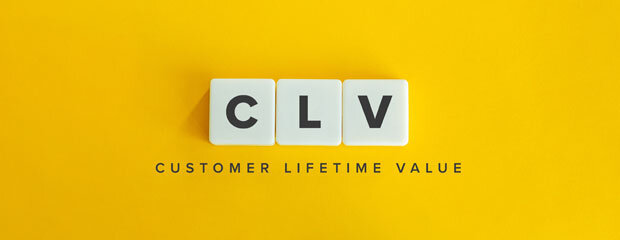Digital ads, social media, website, email campaigns…hoteliers do (and spend) a lot to attract guests. Add in OTA commissions, transaction fees, and even your marketing personnel and your Customer Acquisition Costs (CAC) could go through the roof. The importance of enticing guests to return cannot be overstated, given that customer retention costs less than acquisition—in fact, 5 times less. What if we told you that you could bring CAC down even further?
By tracking and measuring your Customer Lifetime Value (CLV), you can identify your most valuable guests—and then put measures in place to bring these VIPs back again and again. Moreover, by pinpointing your high-value guests and understanding their preferences, you can channel your marketing efforts towards attracting a larger audience from this demographic. This, in turn, should elevate your CLV overall and concurrently diminish your CAC.
In this blog post, we will look at how to measure and track CLV to identify your most valuable guests, and then some of the most effective strategies hoteliers are using to retain and grow a loyal customer base!
What is CLV and Why it Matters
CLV represents the total revenue a hotel can reasonably expect to earn from a guest to understand the long-term value of its customer base. It is calculated by estimating the total profit generated by a customer for the entire duration of their patronage and takes into account how many repeat bookings they’ve made, gross revenue from the customer, and the length of the relationship (churn rate).
Why is calculating CLV useful for hotels? Because it informs financial forecasting, which in turn helps plan strategic business goals. Understanding CLV can also provide insight into where in the customer lifecycle guests fall off, where and when they spend the most, and what marketing or loyalty tactics can be optimized based on that information.
How Do Hotels Measure CLV?
Is your hotel already calculating CLV? If so, you’ll be familiar with this equation:
CLV = Average Stay Value × Purchase Frequency × Customer Lifespan
While there is a basic equation for calculating CLV, there are various factors that make this equation unique to each hotel, such as business model, demographics, region, and data availability.
To find your specific hotel stats, you’ll need to harness the power of centralized data. With a property management system (PMS) like WebRezPro, all the numbers you need are at your fingertips in one place without having to cobble together various reporting tools.
Average Stay Value: Also known as Average Transaction Value, Average Stay Value is calculated from all revenue streams—not only from room bookings, but also from dining, spa, gift shop, etc.
Collect Data: The Product/Services Sales Report within WebRezPro breaks down and totals ancillary revenue, including food and beverage, parking fees, spa services, and pet fees. Combine this report with numbers from your Custom Reservation Report for your desired date range.
Purchase Frequency: For hotels, purchase frequency is simply the average number of bookings a customer makes.
Collect Data: Check out your Custom Reservation Report to see how often guests come back, on average. Filter by repeat guests and get the lowdown on your most valuable crowd. Want to dive even deeper? Use source codes to figure out exactly where these top-notch bookings are coming from—whether it’s a specific OTA or a particular campaign, for example.
Customer Lifespan: This is the duration you anticipate a guest will spend interacting with your hotel. You can derive this from your past records, or if your hotel is relatively new, you can go with an industry standard estimate.
Gather Data: Figure out customer lifespans by noting when a guest initially books a stay until their last interaction with your hotel—whether it’s check-out or post-stay communication. The average time span across all your guest data gives you the mean duration value.
Unlock the potential of your reports to generate two CLV figures: your average CLV and the CLV specific to your high-value demographics. In both cases, it’s crucial to compare these values with the corresponding CAC for each group. (You can even further break down this analysis into all your guest segments for more detailed insights that can significantly shape your marketing strategies.) Your hotel’s CAC should always be lower than your CLV. If it’s not, unfortunately, you’re leaving money on the table.

Keep High-value Guests Coming Back
Given that CAC decreases over time with repeat guests, just imagine the potential financial gains from expanding your high-value guest segment. Direct your marketing efforts toward boosting bookings and extending the lifespan of your guests. Now, you might be wondering, how do you go about this? We’re so glad you asked.
The answer is quite simple: personalization + great service. Let’s break it down a bit more:
Reservation Management and Guest Profiles: An automated property management system like WebRezPro allows customers to book any way and anywhere they like. Automatically creating a guest profile whenever a new guest books and storing pertinent information like contact details and stay history, the system also allows you to add notes to help personalize each guest’s experience. A VIP flagging feature helps staff identify and cater to your most valuable guests.
Automated Emails: One of the easiest pieces of your VIP puzzle is setting up automated emails to nurture the guest relationship on and off your property, before and after their stay. Communicate important reservation information, upsell personalized packages and addons, ask for guest feedback to stay on top of changing expectations, and extend gratitude for their patronage with special offers. Customized email templates can be triggered based on reservation data.
Reservation/Housekeeping Alarms: WebRezPro’s housekeeping reports and alarms assist staff in keeping on top of guest requests and special touches. Reservation alarms let front desk staff know at the start of their day VIPs that are checking in that day, while housekeeping alarms can provide reminders to provide turndown service, for example, or extra towels.
Guest Engagement Integrations: A great way to foster loyalty among your VIP guests is by offering personalized experiences. There are a host of PMS integrations to help you get there, including:
- CRM: Use your Customer Relationship Management (CRM) system (like Cendyn, Salesforce and Track) to gather and build out powerful guest profiles and help staff track and nurture your VIPs. Integrated with your PMS, your CRM automatically receives customer reservation data.
- Guest Messaging: In addition to automated emails, guest messaging provides another way to stay in touch with guests in a more immediate fashion. Text messaging with guests can be a time-consuming endeavor but not when it’s integrated with your PMS through integrations like Akia.
- Loyalty Programs: A popular way to increase CLV across DTC and service industries is through loyalty programs as they provide an incentive and structure for repeat patronage. Pro-tip: If you use a third-party integration program, take note of their commission fees as you’ll need to calculate the cost to see if your ROI makes sense. For this reason, it may be something that’s perfect to test on your VIPs first.
The CLV Golden Ticket
Unlocking the secrets of your hotel’s VIPs is like finding the golden ticket to a world of endless chocolate—except in this case, it’s endless profits! Calculating CLV is your magical guide to discovering those extra-special guests who sprinkle a bit of stardust on your revenue reports. Once you’ve unveiled your high rollers, it’s time to roll out the red carpet treatment, ensuring they keep coming back for more. Armed with VIP intel, your marketing game levels up, magnetically pulling in more valuable guests. Just remember, it’s a balancing act—keep those acquisition costs in check for a sure boost to your bottom line.

